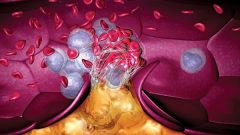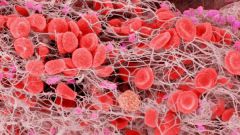Instruction
1
A clot, or thrombosis, occurs due to inflammation of veins. Most often, the clots formed in the superficial and subcutaneous veins, and is accompanied by unpleasant symptoms. Deep vein thrombosis more dangerous and sometimes occurs without obvious signs.
2
Inspect the feet and hands. Most often blood clots occur in the veins of the lower extremities. Alarming symptoms — pain, redness, induration in the region of Vienna. If a strong inflammation can rise the temperature at a localized area of the body. Immediately contact your doctor if you have these symptoms.
3
In daylight note the condition of the skin of the feet. Bluish color of the area of the limbs and swelling may indicate the presence of occlusion. When deep vein thrombosis of the leg may not hurt, but the patient has General malaise, weakness, fever.
4
Promptly go to the doctor-phlebologist, if you have varicose veins. Doctor could determine as soon as the inflammation of a vein and prescribe treatment to prevent thrombus formation. On examination, the doctor determines the blood clot at the special tests. For example, the characteristic of Homans manifests itself in pain during dorsiflexion of the feet.
5
Complete all additional survey, which was sent by the doctor. This files most often prescribed ultrasound examination. There are more modern methods of venography and plethysmography. Primry high sensitivity will help to determine not only the clot but no blood flow disorders and defects fill with blood vessels.
6
Don't forget about the dangerous complications, which can cause a blood clot moving up the body. The most dangerous of them is pulmonary embolism, and sepsis (blood infection) — can lead to death. So follow all doctor's appointments, follow this procedure and careful treatment.











